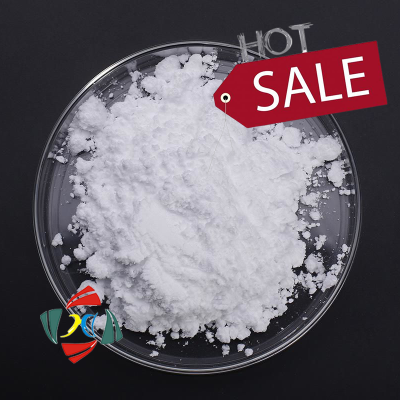-
Categories
-
Pharmaceutical Intermediates
-
Active Pharmaceutical Ingredients
-
Food Additives
- Industrial Coatings
- Agrochemicals
- Dyes and Pigments
- Surfactant
- Flavors and Fragrances
- Chemical Reagents
- Catalyst and Auxiliary
- Natural Products
- Inorganic Chemistry
-
Organic Chemistry
-
Biochemical Engineering
- Analytical Chemistry
- Cosmetic Ingredient
-
Pharmaceutical Intermediates
Promotion
ECHEMI Mall
Wholesale
Weekly Price
Exhibition
News
-
Trade Service
Hyperuricemia is not only the basis for gout attacks, but can also exacerbate obesity
Hyperuricemia is not only the basis for gout attacks, but can also exacerbate obesity
Obesity and hyperuricemia are mutually causal and interact to form a vicious circle
The relationship between hyperuricemia and visceral fat - lip death and tooth cold (Photo source Baidu)
The relationship between hyperuricemia and visceral fat - lip death and tooth cold (Photo source Baidu)Hyperuricemia and visceral fat: a win- win situation
Hyperuricemia and visceral fat : one prosperousPrevious studies have pointed out that elevated blood uric acid is an important factor in the accumulation of visceral fat, and the proportion of obese people in gout patients is higher than that of normal people
Previous studies have pointed out that elevated blood uric acid is an important factor in the accumulation of visceral fat, and the proportion of obese people in gout patients is higher than that of normal people
Another cross-sectional study of 867 patients with type 2 diabetes showed that serum uric acid levels were positively correlated with centrosome fat distribution, especially in visceral adipose tissue (r=0.
Data from a China Health and Nutrition Examination Survey from 2007 to 2008 showed that the proportion of gout patients who were obese (body mass index (BMI) ≥30) was higher than normal (53% vs.
Data from a China Health and Nutrition Examination Survey from 2007 to 2008 showed that the proportion of gout patients who were obese (body mass index (BMI) ≥30) was higher than normal (53% vs.
Data from a China Health and Nutrition Examination Survey from 2007 to 2008 showed that the proportion of gout patients who were obese (body mass index (BMI) ≥30) was higher than normal (53% vs.
Another cross-sectional study of 867 patients with type 2 diabetes showed that serum uric acid levels were positively correlated with centrosome fat distribution, especially in visceral adipose tissue (r=0.
Another cross-sectional study of 867 patients with type 2 diabetes showed that 867 diabetic serum uric acid levels were positively correlated with centrosome fat distribution, especially in visceral adipose tissue (r=0.
Hyperuricemia and Visceral Fat: Both Loss
A reduction in visceral fat can reduce blood uric acid levels, and likewise a reduction in uric acid levels can help reduce visceral fat
A reduction in visceral fat can reduce blood uric acid levels, and likewise a reduction in uric acid levels can help reduce visceral fat
A total of 3,162 3,162 gout patients were screened in this study , all of whom met the American College of Rheumatology (ACR)/European League Against Rheumatism (EULAR) clinical classification criteria for gout and received uric acid-lowering (ULT) therapy during the observation period .
Due to the following standard exclusion criteria, 237 237 eligible subjects were finally enrolled
Taking anti-obesity drugs, such as orlistat (n=12);
Age <18 years (n=17);
Follow-up interval < 2 weeks or > 6 months (n=15 5); 6
Women (n=13), reducing differences in fat distribution by gender
No (n=2,166) or only one body composition measurement (n=562);
No (n=2,166) or only one body composition measurement (n=562);
No (n=2,166) or only one body composition measurement (n=562);Taking anti-obesity drugs, such as orlistat (n=12);
Taking anti-obesity drugs, such as orlistat (n=12);
Taking anti-obesity drugs, such as orlistat (n=12);Age <18 years (n=17);
Age <18 years (n=17);
Age <18 years (n=17);Follow-up interval < 2 weeks or > 6 months (n=15 5); 6
Follow-up interval < 2 weeks or > 6 months (n=15 5); 6
Follow-up interval < 2 weeks or > 6 months (n=15 5); 6Women (n=13), reducing differences in fat distribution by gender
.
Women (n=13), reducing differences in fat distribution by gender
.
.
Figure 1: Research Flowchart
Figure 1: Research FlowchartAnthropometric and metabolic characteristics of study patients at baseline and final visit level are shown below
.
.
Among them, 190 (80.
2%) were overweight ( BMI≥24) and 76 (32.
1%) were obese (BMI≥28) .
81 ( 34.
2%) had hypertension , 12 (5.
1%) had diabetes , 127 (53.
6%) had hypertriglyceridemia , 41 (17.
3%) had fatty liver , 6 ( 5.
1%) had 2.
5%) had cardiovascular disease and 22 (9.
3%) had tophi .
There were 7 people (3.
0%) with eGFR<60ml/min/1.
73m2 .
2%) were overweight ( BMI≥24) and 76 (32.
1%) were obese (BMI≥28) .
81 ( 34.
2%) had hypertension , 12 (5.
1%) had diabetic hypertension (5.
1%) , 127 (53.
6%) had hypertriglyceridemia (53.
6%) , 41 (17.
3 %) %) had fatty liver (17.
3%) , 6 (2.
5%) had cardiovascular disease (2.
5%) blood vessels , and 22 (9.
3%) had tophi .
There were 7 people (3.
0%) with eGFR<60ml/min/1.
73m2 .
During a median follow-up of 12 weeks, mean (SD) serum uric acid decreased from 464.
22 to 360.
93 μmol/L (Fig.
1A)
.
The median (IQR) of VFA also decreased, from 97.
30 cm to 90.
90 cm2 (Fig.
1B)
.
Body fat (Fig.
1C), waist circumference (Fig.
1D), BMI and triglycerides and cholesterol all decreased
.
22 to 360.
93 μmol/L (Fig.
1A)
.
The median (IQR) of VFA also decreased, from 97.
30 cm to 90.
90 cm2 (Fig.
1B)
.
Body fat (Fig.
1C), waist circumference (Fig.
1D), BMI and triglycerides and cholesterol all decreased
.
cholesterol
Figure 1: Comparison of main features after uric acid reduction
.
Serum urate levels (A) are shown as mean ± SD, and visceral fat area (B), body fat (C), and waist circumference (D) are shown as medians (IQR25-75)
.
.
Serum urate levels (A) are shown as mean ± SD, and visceral fat area (B), body fat (C), and waist circumference (D) are shown as medians (IQR25-75)
.
In order to more directly confirm the relationship between blood uric acid and visceral fat area, the researchers divided four groups according to the different degrees of blood uric acid reduction, and compared whether different degrees of blood uric acid reduction would affect the reduction of visceral fat area, body fat and waist circumference
.
.
The analysis showed that the results showed that the reduction of VFA was significantly correlated with the reduction of SU, and the reduction of body fat was also correlated with the reduction of SU, but there was no significant correlation between waist circumference
.
Compared with Q1 (<25 μmol/L), Q2 (25-109 μmol/L) and Q3 (109-189 μmol/L), Q4 (>189 μmol/L) had significantly lower visceral fat area
.
We also evaluated the effects of the xanthine oxidase inhibitor febuxostat and the uric acid excretion agent benzbromarone on body composition, and both showed no significant difference in VFA corresponding to the two uric acid-lowering agents
.
.
Compared with Q1 (<25 μmol/L), Q2 (25-109 μmol/L) and Q3 (109-189 μmol/L), Q4 (>189 μmol/L) had significantly lower visceral fat area
.
We also evaluated the effects of the xanthine oxidase inhibitor febuxostat and the uric acid excretion agent benzbromarone on body composition, and both showed no significant difference in VFA corresponding to the two uric acid-lowering agents
.
Figure 2: Feature comparison stratified by ΔSU quartiles
.
Changes (Δ) in visceral fat area (A), body fat (B), and waist circumference (C) were calculated from baseline-post-treatment levels and expressed as mean ± standard deviation
.
*P<0.
05, **P<0.
01, ns.
Not significant
.
This retrospective study provides strong evidence that lowering blood uric acid levels with drugs in pain patients can reduce the area of visceral fat
.
.
Coincidentally, many previous studies have reported the relationship between HUA and obesity.
There are also many previous studies reporting the relationship between HUA and obesity.
-
A Japanese study pointed out that elevated SU was an independent predictor of developing obesity in HUA patients, and another 2020 study also pointed out that HUA was associated with visceral fat rather than subcutaneous fat
. -
A 2018 study on the Chinese population also pointed out that SU had a greater impact on BMI than BMI had on SU
.
A Japanese study pointed out that elevated SU was an independent predictor of developing obesity in HUA patients, and another 2020 study also pointed out that HUA was associated with visceral fat rather than subcutaneous fat
.
A Japanese study pointed out that elevated SU was an independent predictor of developing obesity in HUA patients, and another 2020 study also pointed out that HUA was associated with visceral fat rather than subcutaneous fat
.
.
A 2018 study on the Chinese population also pointed out that SU had a greater impact on BMI than BMI had on SU
.
A 2018 study on the Chinese population also pointed out that SU had a greater impact on BMI than BMI had on SU
.
.
Mechanism
Mechanism of Action On the one hand, urate-anion exchange transporter 1 (URAT1) expressed in hepatocytes and adipocytes plays a key role in urate homeostasis in the proximal tubule, which transports urate to in these cells.
In hepatocytes, urate promotes the conversion of citrate to acetyl-CoA to promote lipogenesis and buffer increases in circulating free fatty acids
.
On the other hand, elevated intracellular uric acid levels can directly up-regulate the expression of lipogenesis-related proteins and down-regulate lipolysis-related proteins to induce excessive triglyceride accumulation in adipocytes .
Kill two birds with one stone, why not do it
Kill two birds with one stone, why not do itTherefore, for gout patients, diet control, moderate exercise, weight loss, observance of wills, and scientific medication can not only reduce uric acid, but even reduce weight, which can be described as killing two birds with one stone
.
.
Reference: Ran Z, Xue X, Han L, Terkeltaub R, et.
Decrease in Serum Urate Level Is Associated With Loss of Visceral Fat in Male Gout Patients.
Front Endocrinol (Lausanne).
2021 Sep 14
Decrease in Serum Urate Level Is Associated With Loss of Visceral Fat in Male Gout Patients.
Front Endocrinol (Lausanne).
2021 Sep 14
Leave a Comment







